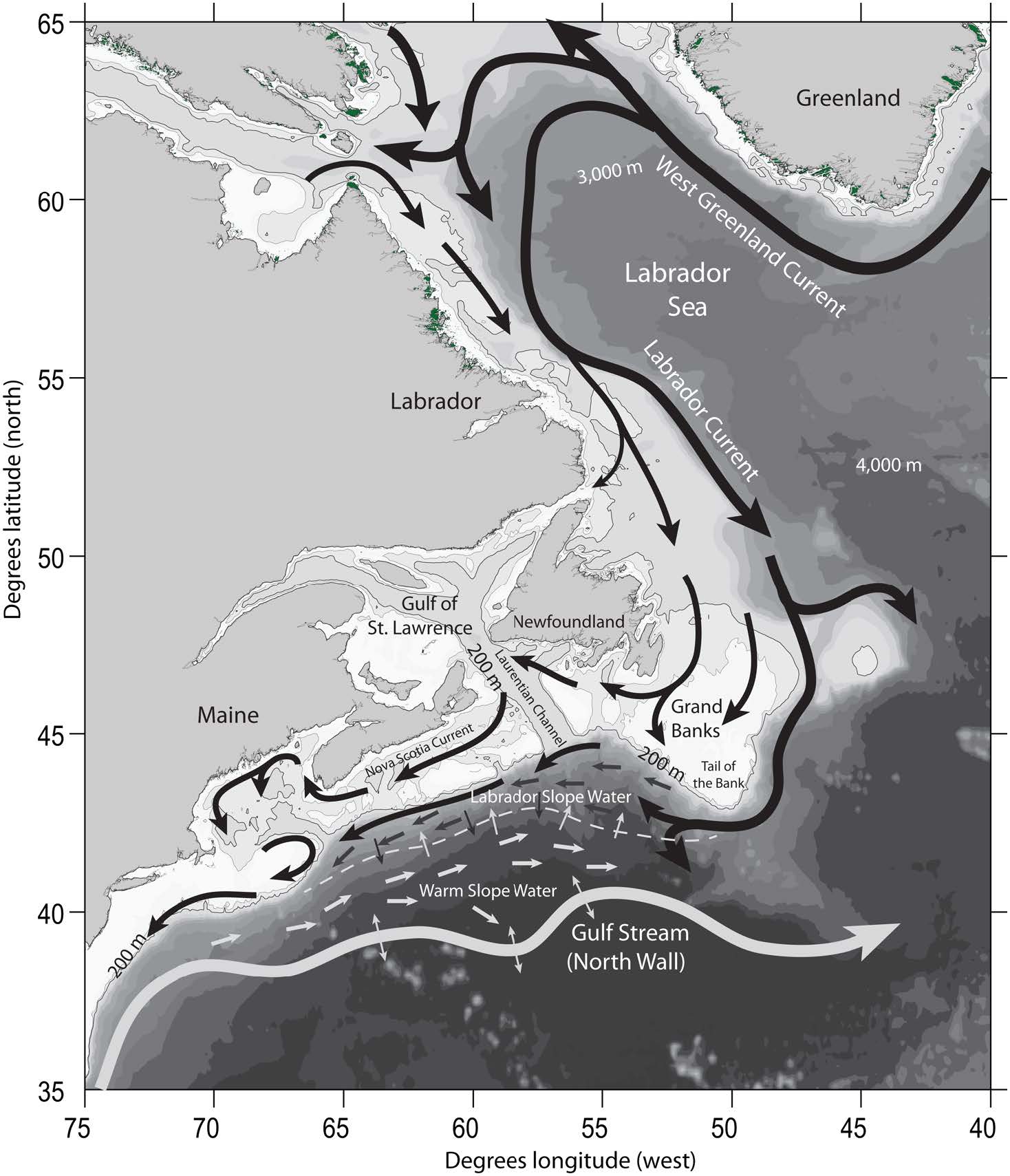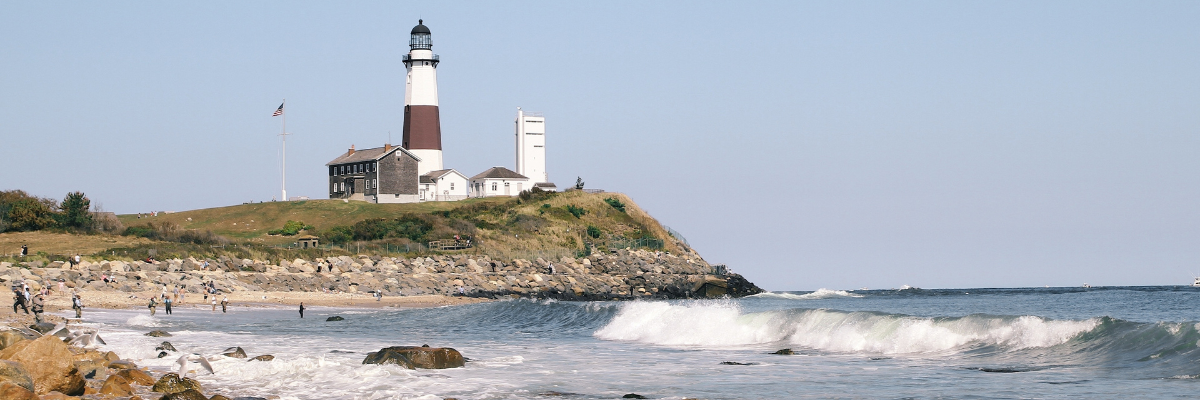Gulf Stream & Warm Slope Water
The Gulf Stream is a major component of ocean circulation in the Northwest Atlantic. Propagation of Gulf Stream meanders and resulting eddies can create favorable conditions for high primary productivity throughout the Mid-Atlantic Bight and northwards to the Georges Bank shelf break (Townsend et al., 2006, Ryan et al., 1999). In contrast, extreme meanders in the Gulf Stream path and interactions between Gulf Stream warm core rings and continental shelf topography can lead to dramatic changes in the shelf water properties and shelf circulation, possibly to the detriment of critical habitat (Gawarkiewicz et al., 2018). The position of the Gulf Stream appears to be a reliable indicator of bottom water temperature on the Northeast Shelf and, through this relationship, indirectly linked to the distribution of some commercially important fish species (Nye et al., 2014) as well as variations in plankton community composition (Taylor 1995). The intrusion of Warm Slope Water into the Gulf of Maine, sourced from North Atlantic Central water transported by the Gulf Stream, is mediated by the position of the Gulf Stream north wall (Townsend et al., 2006).

Labrador Current
The Labrador Current flows southward along the western boundary of the Labrador Sea, and the shallow and deep branches are part of the larger basin-wide gyre circulation in the northern North Atlantic. The current provides two of the three main sources of water entering the NES ecosystem: Labrador Shelf Water is the coldest and freshest water and is confined to the shelf, while Labrador-Subarctic Slope Water (LSSW) is a deeper cold/fresh water mass that arrives along the continental slope. Both of these younger water masses are lower in dissolved nutrient concentrations than those of southerly origin. These northern-source waters combine with the deep warm/salty southern-origin ATSW to define the initial temperature, salinity, stratification, and nutrient content of the shelf water within the NES ecosystem. Variations in the composition of the slope water in the Gulf of Maine are correlated with basin-scale atmospheric forcing of the North Atlantic Oscillation (NAO). When the NAO is in a positive state, the volume transport of LSSW is relatively low and water export does not reach beyond the Gulf of St. Lawrence (Drinkwater et al., 2002). When the NAO is in a negative state, volume transport of the Labrador Current is high and a greater amount of LSSW enters the Gulf of Maine through the Northeast Channel, resulting in colder, fresher, and lower nutrient bottom waters (Petrie 2007). However, the extent of LSSW entering Gulf of Maine may be diminished in years when the inflow to the Gulf of Maine is dominated by greater volumes of shelf water in the middle to upper layers (Townsend et al., 2010).
